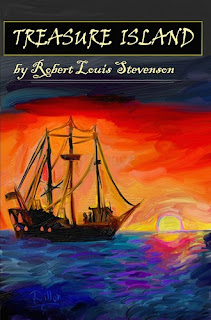Some of my favorites are the new Penguin Classics with the art by Ruben Toledo-- these are all so beautiful, though only a few have been published by Penguin so far. Getting those out of the way, here are ten covers I really adore, because they represent the book so well or are just plain amazing to look at:
1.
I haven't re-read these books in ages, but seeing this beautiful (and gigantic) Barnes & Noble edition makes me want to revisit The Lion, The Witch, & The Wardrobe at the very least.
2.
Pretties is my favorite cover of the trilogy+1 spin-off series, but all these books have beautiful covers of beautiful models. This series is a few years old, and I have a suspicion these covers helped inspire the current "close-up of beautiful girl" trend for YA covers.
3.
Pride and Prejudice by Jane Austen
This newer Penguin cover is soo gorgeous-- I love covers with silhouettes, and this edition with Elizabeth and Darcy is one I badly wish I owned.
This newer Penguin cover is soo gorgeous-- I love covers with silhouettes, and this edition with Elizabeth and Darcy is one I badly wish I owned.
4.
Harry Potter and the Sorcerer's Stone by JK Rowling
I just love this Sorcerer's Stone cover, the first of the new set of seven which will be released in August. Hopefully, these fun, artistic covers will appeal to a new generation of young Harry Potter fans.
I just love this Sorcerer's Stone cover, the first of the new set of seven which will be released in August. Hopefully, these fun, artistic covers will appeal to a new generation of young Harry Potter fans.
5.
Little Women by Louisa May Alcott
This is a Penguin Threads edition (yep, I'm definitely Penguin-partial). I love the amazing thread texture and the myriad of little illustrations in the string-- especially the quotes from the book in the inside jacket.
This is a Penguin Threads edition (yep, I'm definitely Penguin-partial). I love the amazing thread texture and the myriad of little illustrations in the string-- especially the quotes from the book in the inside jacket.
6.
The Hobbit by JRR Tolkien
I have a cheaper paperback edition of The Hobbit, and I actually really like it. The art is unique and whimsical; the different illustrations feature scenes from the story and fit the book so well.
I have a cheaper paperback edition of The Hobbit, and I actually really like it. The art is unique and whimsical; the different illustrations feature scenes from the story and fit the book so well.
7.
Revolution by Jennifer Donnelly
This book has the feel of the 18th-century journal which Andi finds in the story-- the pages are rough-cut and there's a cool red ribbon as a built-in bookmark. I love the juxtaposition of the cover model and the painting.
This book has the feel of the 18th-century journal which Andi finds in the story-- the pages are rough-cut and there's a cool red ribbon as a built-in bookmark. I love the juxtaposition of the cover model and the painting.
8.
Looking at this cover, you just somehow know the story within will be fantastic (which it is).
9.
Jane Eyre by Charlotte Bronte
I've already talked about my love for this cover in a separate Jane Eyre Cover VS Cover post.
I've already talked about my love for this cover in a separate Jane Eyre Cover VS Cover post.
10.
The Great Gatsby by F Scott Fitzgerald
It's easy to see why this edition of The Great Gatsby is so popular. Beautiful, haunting, and mysterious, this is also a nod to the new movie-- which I haven't seen yet, but really want to.
I'd love to check out your favorite book covers, so leave a link to your Top Ten!
It's easy to see why this edition of The Great Gatsby is so popular. Beautiful, haunting, and mysterious, this is also a nod to the new movie-- which I haven't seen yet, but really want to.
I'd love to check out your favorite book covers, so leave a link to your Top Ten!


















































